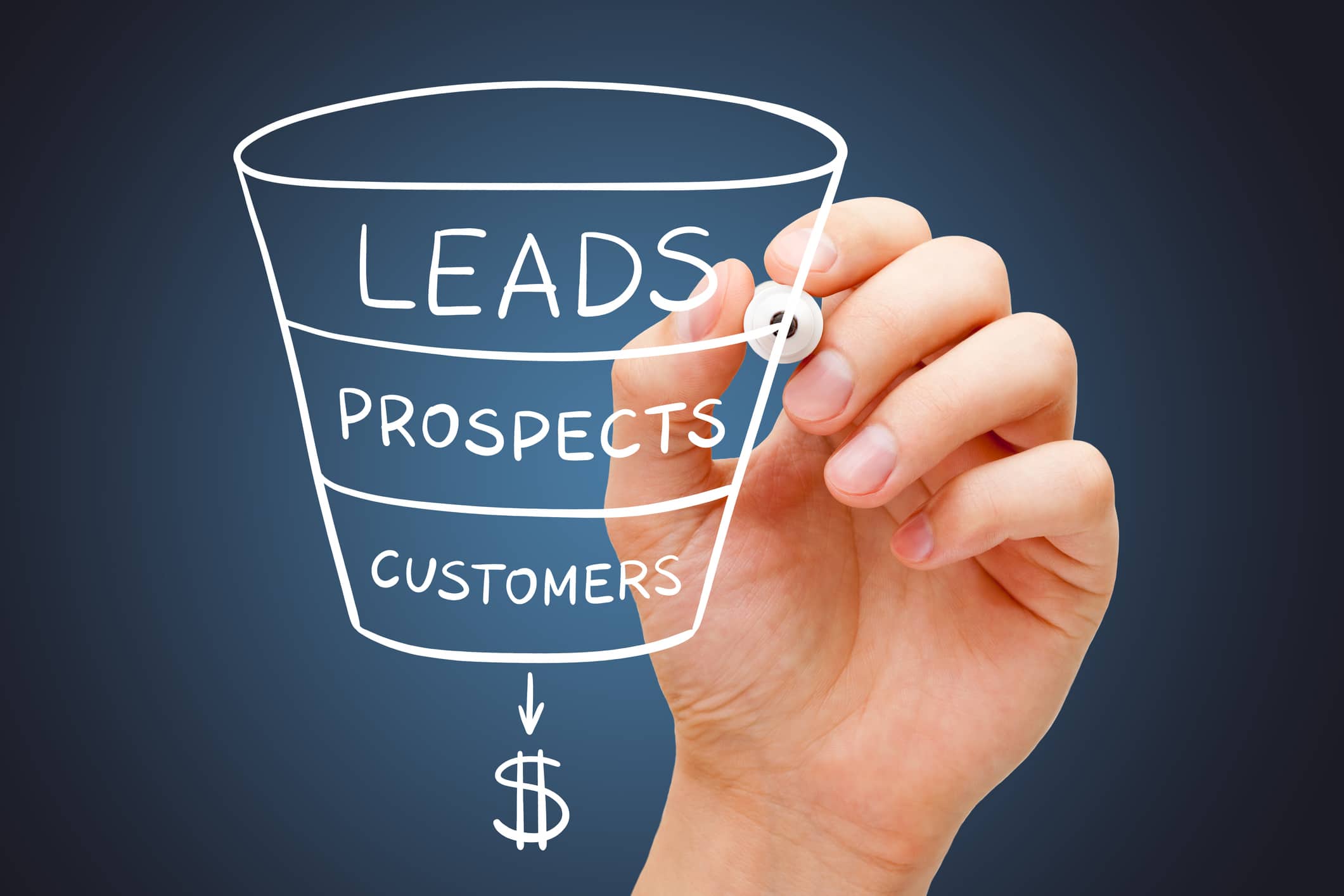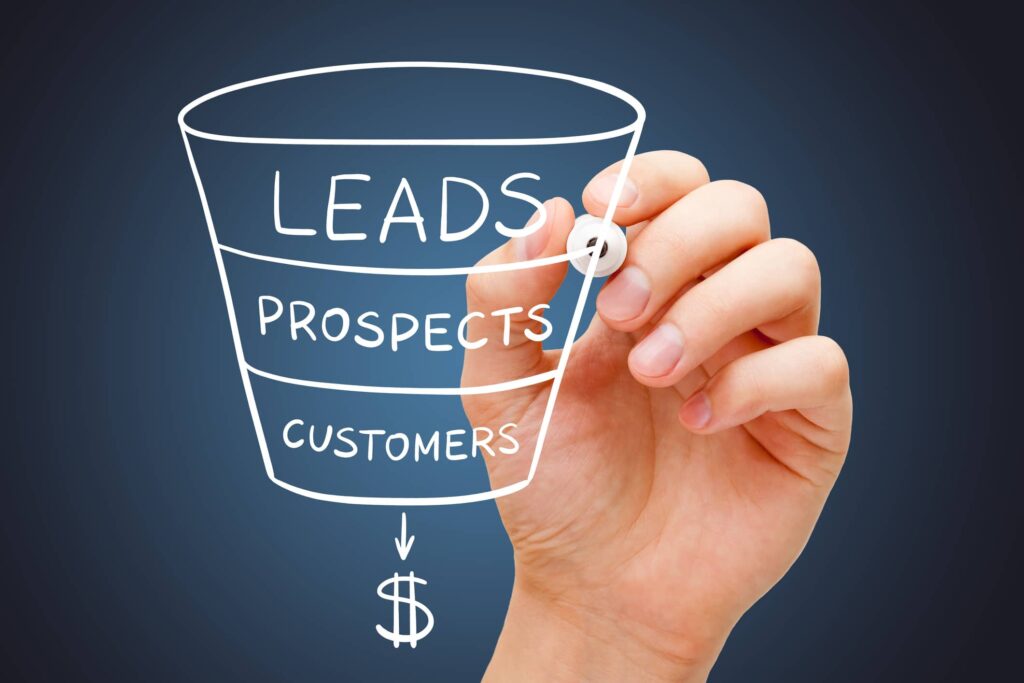In the complex and ever-evolving realm of sales and marketing, sales representatives and teams must distinguish between a lead and a prospect. This understanding is vital to convert prospects into valuable opportunities effectively. By delving into the intricacies of these terms, this article aims to equip you with the knowledge necessary to navigate the sales process with greater efficiency and success.
A lead can be defined as an individual or organization that has shown some level of interest or engagement with a company’s products or services. This interest may be demonstrated by filling out a contact form, subscribing to a newsletter, or attending a webinar. Leads are often obtained through various marketing efforts, such as advertising campaigns, content marketing, or social media engagement.

While leads indicate some interest, they are not necessarily ready to purchase or engage in a sales conversation. They are potential customers who have expressed initial curiosity but may require further nurturing and qualification before they can be considered viable prospects.
On the other hand, a prospect is a lead who has been qualified and deemed more likely to convert into a paying customer. This qualification process involves evaluating the lead’s interest level, fit with the company’s target market, and potential to benefit from the products or services offered.
Prospects are typically individuals or organizations that have demonstrated a higher level of engagement, such as requesting a product demo, engaging in a sales call, or expressing a specific need or pain point that aligns with the company’s offerings.
The critical distinction between leads and prospects lies in the level of qualification and readiness to engage in a sales conversation. While leads are at the initial stage of the sales funnel, prospects have progressed further and are more likely to be receptive to sales efforts. Identifying and prioritizing prospects allows sales reps to focus their time and resources on those individuals or organizations most likely to convert into customers.
Effectively managing leads and prospects requires a strategic approach. It involves implementing lead nurturing strategies to cultivate relationships with leads and gradually move them toward becoming prospects.
This may involve personalized communication, targeted content, and providing value-added resources to address their needs and pain points.
Furthermore, a qualification process is crucial to identify and prioritize essential prospects. This process may involve criteria such as budget, authority, need, timeline (BANT), or other qualifying factors specific to the company’s industry and target market. By thoroughly evaluating leads and determining their potential as prospects, sales reps can allocate their time and efforts more efficiently, focusing.

Lead vs Prospect vs Opportunity: The Basics
First, let’s clarify these fundamental concepts. A lead is a potential customer who has shown interest in your product or service but has yet to be qualified. This could be someone who has signed up for your email list, followed you on social media, or downloaded a whitepaper from your website. They have taken the first step, but it’s unclear whether they fit your product well.
A prospect, on the other hand, is a step ahead in the sales funnel. This is a lead that has been qualified and matches your ideal customer profile. They have a need or pain point that your product or service can address, and there’s a reasonable chance they might buy it. The transition from a lead to a prospect involves a deeper understanding of their needs and the potential alignment with your offer.
Qualifying Leads: Identifying the Right Fit
Qualifying leads is critical in determining whether a lead should be considered a prospect. This involves assessing their interest, needs, and potential fit with your product or service. Sales reps often use specific criteria, like budget, authority, needs, and timeline (BANT), to determine whether a lead has the potential to become a prospect.
The Evolution from Prospects to Opportunities
Once a lead is qualified and becomes a prospect, the next stage in the sales process is turning them into a sales opportunity. This means the prospect has shown a clear interest in your product or service and is considering purchasing. The sales team works to build a relationship, address any concerns, and move the prospect closer to a buying decision.
Understanding the Sales Funnel
The journey from lead to prospect to sales opportunity gradually progresses through the sales funnel. Each stage represents a deeper engagement and commitment from the potential customer. For long-term success, sales teams must nurture leads and prospects at each stage, ensuring a steady flow of customers through the funnel.

How Sales Reps Can Effectively Manage Leads and Prospects
1- Identifying Good Fits: Sales reps should focus on leads that match the ideal customer profile. This ensures time and resources are spent on leads most likely to convert into prospects and, eventually, customers.
2- Engaging Through Multiple Channels: Utilize various platforms like email, social media, and content marketing to engage with leads. This multi-channel approach increases the chances of capturing their interest.
3- Understanding Pain Points: A crucial part of qualifying leads is understanding their challenges and how your product can address them. This relevance is what transforms a general inquiry into a genuine prospect.
4- Maintaining Consistent Communication: Regular follow-ups and personalized communication keep prospects engaged and informed, moving them further in the sales process.
5- Using Data to Refine Strategies: Sales teams should continuously analyze data from their interactions with leads and prospects. This insight helps in refining strategies for better targeting and conversion.
Long-Term Relationship Building
It’s important to remember that not every lead or prospect will immediately turn into a sales opportunity. Building long-term relationships with potential customers can pay off in the future. Even if a lead or prospect doesn’t buy now, maintaining a relationship means they might think of your brand when ready to purchase.
The Role of Technology in Managing Leads and Prospects
Advancements in CRM (Customer Relationship Management) and sales automation tools have revolutionized how sales teams manage and nurture leads and prospects. These technologies allow for better tracking, segmentation, and personalized communication, enhancing the efficiency and effectiveness of the sales process.
Understanding and differentiating between a lead and a prospect is crucial for an effective sales strategy. While a lead represents initial interest, a prospect is a qualified lead that matches your ideal customer profile and shows a higher likelihood of purchasing your product.
The journey through the sales funnel, from lead to prospect to opportunity, requires a strategic and tailored approach, focusing on qualifying leads, understanding pain points, and building long-term relationships. With the right tactics and tools, sales teams can effectively turn leads into prospects and prospects into valuable sales opportunities, ensuring sustained growth and success.

